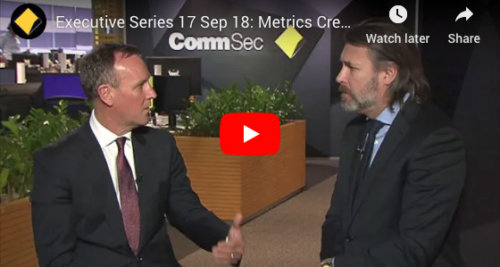Investing in property debt for income
ASX June Investor Update Newsletter: contributed by Andrew Lockhart of Metrics Credit Partners.
Benefits and risks of CRE debt
In the current environment, investors are looking for reliable sources of income, capital stability, diversification and protection from inflation. However, with official interest rates at record lows, finding defensive investments that also deliver an attractive return is hard.
Australian corporate loans, including commercial real estate (CRE) debt, are among the few asset classes that offer both capital preservation and attractive risk-adjusted returns.
Investment in CRE debt has long been used by institutional and wholesale investors to diversify their portfolios. However, there has been growing demand from retail and self-managed superfund investors to gain access.
In recent years, select opportunities have become available to retail investors in the Australian market, via credit-focussed Listed Investment Companies (LICs) or Listed Investment Trusts (LITs).
Since being made available via the ASX, these products have become popular with investors.
Why CRE debt and why now
Australian CRE debt offers attractive risk-adjusted returns and compares favourably with other fixed-income opportunities. The asset class also provides an attractive alternative to real estate equity, including listed Australian Real Estate Investment Trusts (A-REITs).
The asset class is a lower-risk investment than equity because Australian corporate insolvency laws give priority to the interests of creditors in claims over the assets of a business.
The asset class is known for:
- Stable interest income – supported by contractual payments to lenders from cashflows generated by property owners from rents or sale of property assets.
- Attractive risk-adjusted returns – contracted interest and fees payable to lenders, with loans secured by controls over the borrowers and mortgages taken over property assets. That is, security over real assets.
- Diversification – diversified across a range of borrowers and assets such as retail, commercial, residential, industrial REITs, and loans for development purposes.
- Wealth preservation – with the mortgage over the physical property assets securing the loan and the property owner’s equity capital at risk.
- Hedge – against inflation and higher sharemarket volatility.
Despite the impact of COVID-19 on some aspects of the property industry, there is significant demand for commercial and residential real estate that has supported construction activity. There are strong sales and limited signs of oversupply in the markets we operate in, which justifies the increased demand from commercial real estate borrowers.
These borrowers are looking for more flexible forms of financing via alternative lenders since banks are inhibited by regulation, creating more opportunities for non-bank lenders to the CRE debt market.
Understanding LICs and LITs
LICs and LITs give investors exposure to and liquidity in an asset class they would not otherwise have access to. On your behalf, the listed company or listed trust invests your money into a diversified portfolio of assets that are professionally managed by an experienced investment team.
They allow retail investors to gain exposure to an asset class, like CRE debt, offering a regular, predictable income and being able to buy and sell their holdings or units on ASX, with daily liquidity, like shares.
It is important to note the difference between LICs and LITs and apply that to your personal investment circumstances. Because LICs are companies, they pay franked dividends, whereas LITs are incorporated as trusts, so they pay out all surplus income directly to investors as trust distributions.
For specialist non-bank lenders like Metrics, which offers corporate loan-focussed credit strategies via the MCP Master Income Trust (ASX: MXT) and the MCP Income Opportunities Trust (ASX: MOT), the LIT structure makes its debt assets more readily tradable.
Investors are provided with access to the CRE debt market via private market CRE and other corporate loans, diversified by a breadth of projects and borrowers, sectors, geography, state of development and position in the capital structure.
Risks
As with any investment, manager skill and expertise play a key role in mitigating risks within a CRE debt portfolio. An experienced investment team that understands the various sources of income available from, and risks associated with, direct CRE lending is best able to implement investment strategies and processes to maximise returns from this asset class.
In terms of protections, there are range of controls the lenders often negotiate with the borrowers, which include (but are not limited to) the following:
- Valuation risk – the possibility that the property is overvalued and worth less than expected when it matures or is sold. This is managed by the lenders like Metrics, with independent market valuations and a loan to value ratio (LVR) that reflects the potential volatility of the asset price.
- Construction risk – this is mitigated via appropriate independent assessment of the cost to complete the construction activity with loan funds progressively released based on project-completion milestones.
- Legal due diligence – prior to lending funds for development activities, extensive external legal due diligence is undertaken. The lender usually has full security over the borrower and a mortgage over the real property. In most cases (except for large publicly listed development groups), sponsors, directors and shareholders also provide personal guarantees.
- Settlement default risk – this risk is mitigated by only advancing funds against a known source of cashflow. Deposits are only released to the lender’s account and applied towards debt repayment. Historically, the level of settlement defaults has been low and with rising property prices this risk is currently quite low.
With all investment decisions, it is important that investors do their due diligence on the record of the manager and ensure the product aligns with individual wealth goals and risk appetite.
With the prospect of higher economic growth over the next two to three years, we expect an increasing appetite from companies involved in construction, property development and real estate acquisition.
For investors looking for regular, risk-adjusted monthly income without exposure to the volatility of the equity markets, CRE debt is worth a look, particularly in the current climate.
4 June 2021
This communication is issued by The Trust Company (RE Services) Limited ABN 45 003 278 831 AFSL 235 150 (Perpetual) as Responsible Entity of MCP Income Opportunities Trust ARSN 631 320 628 and MCP Master Income Trust ARSN 620 465 090 (Funds). Metrics Credit Partners Pty Ltd ABN 27 150 646 996 AFSL 416146 (Metrics) is the Manager of the Funds. The information provided in this communication is of a general nature only and has been prepared without taking into account your objectives, financial situation or needs. Before making an investment decision, you should consider the current product disclosure statement (PDS) of the Funds, and the Fund’s other periodic and continuous disclosure announcements lodged with the ASX, which are available at www.asx.com.au, and assess whether the Funds are appropriate given your objectives, financial situation or needs. If you require advice that takes into account your personal circumstances, you should consult a licensed or authorised financial adviser. Neither Perpetual or Metrics guarantees repayment of capital or any particular rate of return from the Funds. The target return is a target and may not be achieved. Past performance is not a reliable indicator of future performance.
Other News
Metrics response to ASIC’s report on Advancing Australia’s Evolving Capital Markets
Attributable to Metrics Group CEO and Managing Partner, Andrew Lockhart: Metrics Credit Partners (“Metrics”) welcomes ASIC’s roadmap to promote strong,…
Livewire Interview – Why Private Debt remains a compelling opportunity
At a time where seemingly everything is in a bull market, thoughts inevitably turn to what happens next and how…
INSIGHTS
MCP Income Opportunities Trust (MOT) lists on ASX
Sydney, 29 April 2019: The Trust Company (RE Services) Limited (ABN 45 003 278 831) (Responsible Entity) is the responsible…
MCP Master Income Trust wins Lonsec Listed Fund Award
The award came a year after MXT was listed on the Australian Securities Exchange






